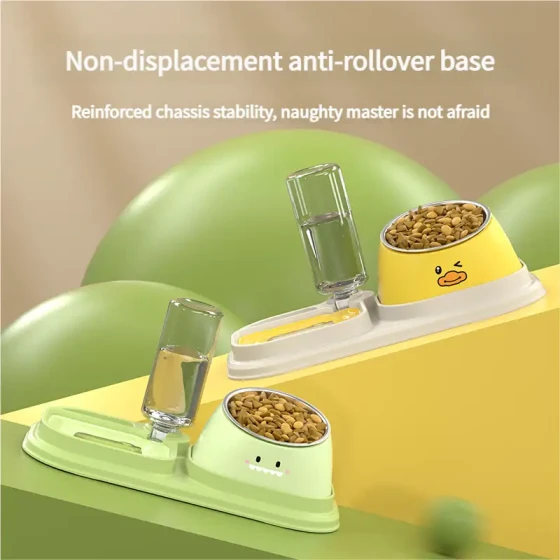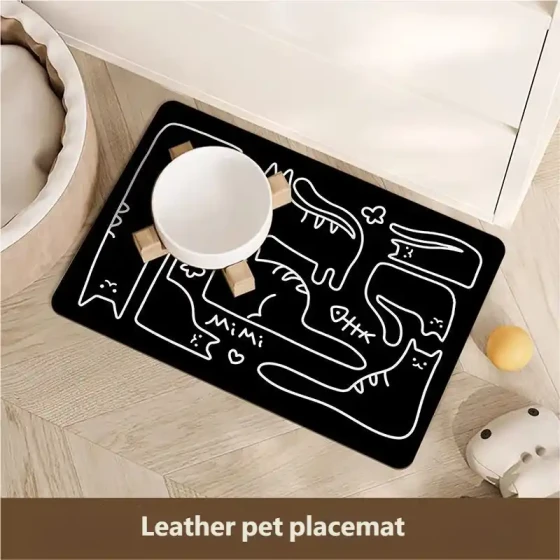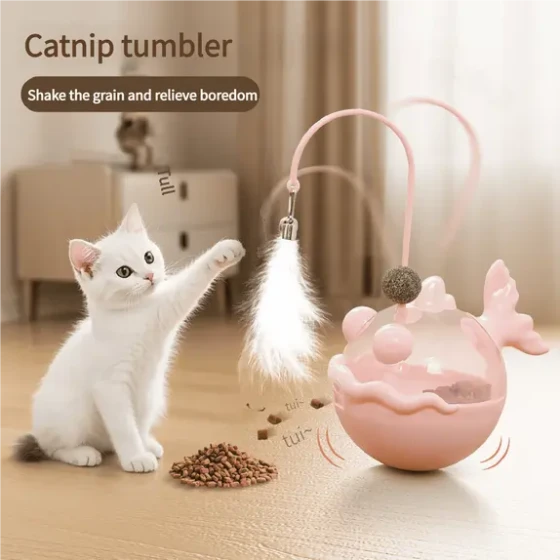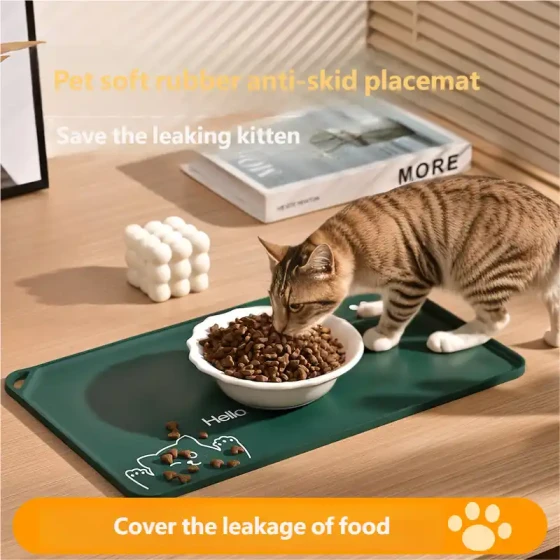Is Pink Vomit in Cats Cat Plague_Cause Analysis of Cats Vomiting Pink Liquid
Cats vomiting pink liquid is indeed an alarming sign that makes pet owners’ hearts skip a beat. Many might immediately associate it with the frightening “cat plague” (referring to feline panleukopenia), but that is not the only possibility. Simply put, cats vomiting pink water does not necessarily mean cat plague, but it often indicates possible bleeding or serious irritation in the digestive tract, requiring immediate attention and professional veterinary help.
The pink color in cat vomit is usually because of a small amount of blood mixed in. This color may resemble pale pink juice or may show blood streaks or a more obvious red color. The blood could originate from the esophagus, stomach, or upper small intestine. Vomiting itself is a common symptom in cats and may occur due to various reasons such as eating too fast, dietary intolerance, hairball accumulation, and so on. However, once the vomit’s color is abnormal, especially pink or red, it means the situation could be more complex and serious.
Cat Plague (Feline Panleukopenia) and Pink Vomit
Cat plague is a severe contagious disease caused by the feline panleukopenia virus and is especially fatal to kittens. Its main symptoms include high fever, lethargy, loss of appetite, severe vomiting, and diarrhea. Vomit caused by cat plague can present in various colors — initially it may be yellow bile and later, due to intestinal damage and bleeding, bloody vomit may appear that can be red or pink. Therefore, while pink vomit may be a symptom of cat plague, it is not an exclusive or definitive sign. If cat plague is suspected, other symptoms must be considered such as vaccination status, exposure history, mental status, body temperature, and presence of diarrhea (especially bloody stools). Diagnosis requires virus testing and blood routine examination (cat plague causes a drastic decrease in white blood cells).
What Other Possibilities Are There Besides Cat Plague?
As the saying goes, “All roads lead to Rome,” there are many causes for cats vomiting pink water besides cat plague, including the following:
-
Gastrointestinal irritation or inflammation:
- Eating inappropriate items: Such as accidentally ingesting sharp foreign objects (bone fragments, plastic pieces, plant leaves), irritating foods, or spoiled and rotten food. These can scratch or irritate the digestive mucosa causing bleeding.
- Acute gastritis or enteritis: Sudden dietary changes, stress response, bacterial or viral infections (besides cat plague, there are other viruses and bacteria), parasitic infections can all cause gastrointestinal inflammation, mucosal congestion, edema, and even bleeding.
- Hairball disease: Although hairballs are usually vomited as formed clumps, the intense vomiting stimulation can also cause minor stomach mucosal bleeding.
- Parasites: Severe internal parasite infections such as roundworms, hookworms, etc., can damage the intestinal mucosa causing bleeding. Imagine these “unwanted guests” set up camp in the intestines causing ongoing damage to the intestinal wall, making bleeding not surprising.
-
Digestive tract ulcers or tumors:
- Although uncommon, these are potential causes of digestive tract bleeding. Ulcers are deep mucosal injuries, and tumors might erode blood vessels.
-
Esophageal problems:
- Severe retching during vomiting may cause tears at the lower esophagus (Mallory-Weiss syndrome; common in humans but similar cases occur in cats), resulting in bleeding.
- Esophageal foreign bodies or esophagitis can also cause bleeding.
-
Poisoning:
- Certain toxins, such as accidental ingestion of rodenticides (some types cause internal bleeding), or contact with toxic plants, chemicals, etc., can cause digestive tract damage and bleeding.
-
Other systemic diseases:
- Kidney disease, liver disease, pancreatitis, etc., may indirectly affect the digestive system causing vomiting or digestive tract bleeding.
- Coagulation disorders: If the cat’s blood clotting mechanism is impaired, even minor injuries may lead to continuous bleeding.
Why Is It Pink?
Pink vomit usually means a relatively small amount of bleeding; the blood may have been changed in color by stomach acid or diluted by stomach contents. If bleeding is severe, the vomit color is more likely bright red or dark red, even coffee-ground-like (which usually means bleeding has been ongoing longer and blood has been digested by stomach acid). Thus, pink can be considered a sign of mild to moderate digestive tract bleeding.
What Should Pet Owners Do When They Encounter This Situation?
Seeing your cat vomit pink water, never take it lightly, and don’t just “Google” and consider yourself an expert, which might delay medical treatment. The correct approach is:
- Stay calm: Worry is understandable, but panic will not help make the right decision or take proper action.
- Observe: Carefully watch the cat's mental state, appetite, drinking, whether diarrhea is present, temperature (if possible to measure), and the frequency and amount of vomiting. It’s best to take a photo or keep a sample of the vomit to show the vet.
- Seek veterinary care immediately: This is the most critical step! Take the cat to a vet as soon as possible. Describe the symptoms, onset, recent diet, any contact with other animals, outdoor exposure, accidental ingestion of anything, etc.
- Follow the vet’s instructions for examination and treatment: The vet may perform inquiries, physical examination, and recommend blood work, biochemical tests, imaging (X-ray, ultrasound), stool exams, or virus testing to find the cause and then provide treatment. Do not refuse necessary tests; accurate diagnosis is the basis of effective treatment.
Frequently Asked Questions
-
Q: Does all pink vomit mean there is blood?
Answer: In the vast majority of cases, pink vomit is due to mixed-in blood. However, rarely, if the cat ingested foods or items containing pink pigments, vomit may change color. This is uncommon and usually accompanied by a history of ingesting related items. For safety, any pink vomit should be considered abnormal and warrants veterinary care. -
Q: After vomiting pink water, can I feed my cat?
Answer: Before seeing a vet, it is recommended to withhold food and water for a few hours to avoid further gastrointestinal distress or triggering vomiting. Whether you can resume feeding and what to feed should follow veterinary advice. -
Q: Besides vomiting, what other symptoms should I watch for?
Answer: Pay attention to lethargy, loss of appetite, weight loss, diarrhea (especially bloody stools), abdominal pain (cats may not want their belly touched, or may arch their back), fever, dehydration (reduced skin elasticity), pale oral mucosa, etc. -
Q: How is cat plague diagnosed?
Answer: Diagnosis is mainly based on clinical symptoms, history, and laboratory tests. Key lab tests include white blood cell counts (dramatically lowered in cat plague) and antigen or nucleic acid detection of the cat plague virus (which can be tested via feces or vomit samples).
Summary
Cats vomiting pink liquid is a health warning that must not be ignored. It may indicate various underlying problems, including but not limited to cat plague, gastrointestinal inflammation, parasites, foreign bodies, or poisoning. Though not always the most frightening cat plague, any condition causing digestive tract bleeding requires urgent attention. As responsible pet owners, the wisest and most critical action is to promptly take the cat to a veterinary hospital for professional diagnosis and treatment. Early detection and treatment maximize your cat’s health and safety.
References
- Professional pet health care website articles
- Veterinarian clinical experience sharing
- Chapters from veterinary medicine textbooks





